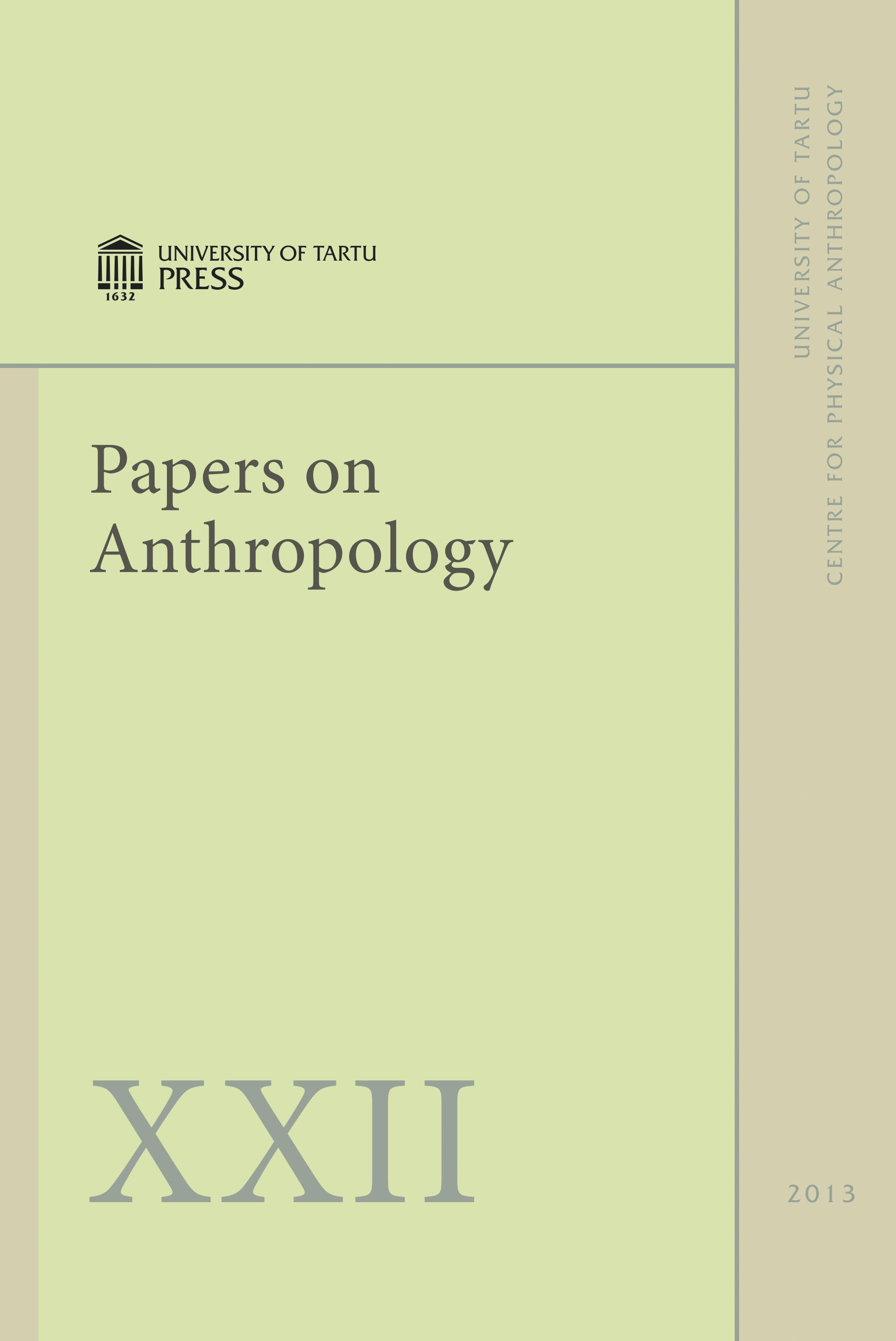The frequency and pattern of dental caries in archaeological populations from Estonia
DOI:
https://doi.org/10.12697/poa.2013.22.13Keywords:
dental caries, caries location, Estonia, Late Iron Age, Middle Ages, Modern TimesAbstract
The caries rate is an important indicator of dental health but also provides a lot of information about dietary habits and the lifestyle of past populations. To understand dietary changes, it is important to observe both the primary location and the severity of caries lesions.
In the present study the prevalence, location and severity of caries lesions were recorded on 5,838 teeth of six skeletal populations from Estonia, from the Migration Period (450–600 AD) to the Early Modern Times (18. c.).
Scoring of the presence and location of caries was done visually with the aid of a dental probe in all the observable teeth.
The majority of dental caries appeared at the cemento-enamel junction, or the appositional surfaces in all the groups. The frequency of caries as well as the severity of lesions increased gradually from the Migration Period to the Early Modern Period. No severe caries lesions (to the pulp) were registered in the Migration Period, and in the Early Modern Times 27% of caries lesions were penetrating to the pulp chamber.
These differences in the frequency and the pattern of caries distribution show possible dietary and subsistence differences between groups. The distribution, as well as the overall prevalence of cavities, suggest that in later periods the diet was probably more cariogenic and less abrasive.

